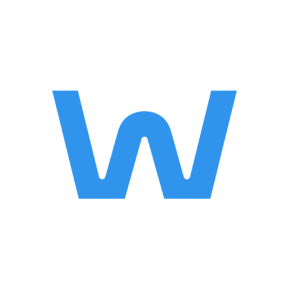Welcome to a series where we share actionable insider tips to make the workplace awesome. Today, we’re talking with Erin Jones, Executive Director of Market Development, who formerly led WorkTango’s team of outbound sales reps, about how she uses 1-on-1 conversations to keep her team connected.
The COVID-19 changed nearly every aspect of Erin’s job — but not her focus on her team. Recognizing that disruption and disconnect presented challenges for her newly remote employees, Erin developed a system. Now, her daily, weekly and quarterly 1-on-1 check-ins encourage a culture of connection, alignment, and real-time feedback. As a bonus, she’s built trust, gained transparency, and boosted productivity for her sales team.
And, she’s ready to share her tips with you.
How to use 1-on-1 conversations to build connection
- Consistency counts.
- Both structured and unstructured check-ins are valuable. Use both.
- Don’t bring your own managerial agenda to an employee 1-on-1. This is your time to support them.
Want to hear more? Erin unpacks her method below.
WorkTango: So Erin, If you could only name one thing that’s most important when it comes to check-ins, what would it be?
Erin: Consistency. If you show up consistently to support your people and give them feedback, they will do great things.
WorkTango: What’s your high-level approach to checking in with your people?
Erin: Well, it’s changed over the past few months. COVID actually provided the opportunity to fine-tune everything we were doing, and check-ins were a huge part of that.
On a day-to-day level, my approach is very different now than it was pre-pandemic. Before, our entire team came together for what we called a “stand-up” once a week to review our goals and progress, and address any issues. We were a team of nearly 20 then, so even though I wanted to check in with everyone 1 on 1 weekly, I couldn’t fit it in. So we did 1 on 1 conversations bi-weekly. Then, we’d do a more formal performance review quarterly.
Now, due to the crisis, my team is much smaller than it was. As a way to stay connected while we’re all working remotely, instead of our weekly stand-up we have a daily “Zoom-Up.” It’s a time to touch base in a quick, casual way. We’re not with each other in person now, so I can’t get a read of how they’re feeling without that. I don’t bring my own agenda to this time together; I’m just available for any support my team needs for that day.
My team never misses this meeting — because it’s about them and their needs, not about me and mine.
My team never misses this meeting — because it’s about them and their needs, not about me and mine.
Because our team is smaller now, I’m able to do a 1-on-1 with each person weekly, which I really like. Additionally, we have a biweekly team meeting to look at the data, and our mission and vision. All of this has allowed me to manage faster, which in turn, gets us results faster.
It’s been very important to us that every meeting have a very specific purpose. So instead of a long meeting that just drags on and on, we each show up and know exactly what we’re going to discuss and accomplish, then we can move on with our day.
WorkTango: What’s the content of your weekly 1-on-1?
Erin: The 1-on-1 check-ins are more structured than the daily Zoom-Ups are. I use an agenda every time, and we discuss progress on goals, any barriers or issues, and specific work products. These 1 on 1 conversations also provide a way for me to check in with my team on a more personal level, especially during times as stressful as what everyone has experienced over the past few months.
WorkTango: What does the preparation for these check-ins look like on your end, as the leader?
Erin: There’s not much prep for the check-ins or Zoom-Ups actually, since it’s all about showing up to support the person I’m meeting with. I’ll spend a few minutes reviewing our dashboard beforehand to see what their work has looked like over the last week, but other than that I just focus on shutting everything down so I can be present.
We still do formal performance reviews on a quarterly basis, and I do prepare more for those. Then, I rely on technology to do the rest. Those look the same as they did before we were all working remotely; we just meet virtually now, instead of in person.
If you’re committed to the weekly check-ins in between, there should be absolutely no surprises in the quarterly performance review.
WorkTango: What tools do you use for performance management?
Erin: WorkTango’s Performance Management platform. Our performance management system walks you through a tried-and-true methodology for holding a successful performance review. The system prompts both the evaluator and the evaluatee with questions such as:
- “What successes have you experienced?”
- “Talk about the setbacks you’ve experienced.”
- “What feedback from today will you take with you?”
- “How do you plan to use it?”
Relying on technology to help me track and manage goals has made all the difference in my leadership of this team.

WorkTango
WorkTango is the employee experience platform built for the modern workplace.


